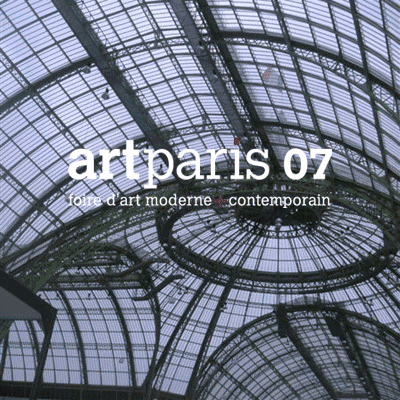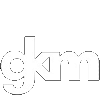|
Erró
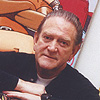  I
paint because painting is a private Utopia, Erró writes of his
art. I
paint because painting is a private Utopia, Erró writes of his
art.
 The landscapes
in Erró’s work are a constantly changing kaleidoscope of
images, multivalent and mysterious, not infrequently controversial,
bursting with life - and titillating, too! There is room in his pictures
for both paradise and visions of fear. The landscapes
in Erró’s work are a constantly changing kaleidoscope of
images, multivalent and mysterious, not infrequently controversial,
bursting with life - and titillating, too! There is room in his pictures
for both paradise and visions of fear.
 Erró
is the alias of Gudmundur Gudmundsson, born on 19 July 1932 in Olafsvik,
in Iceland. He was accepted into art school in Reykjavik as a 19-year
old, subsequently complementing what he had learned there with further
studies in Oslo, Florence and at the School of Byzantine Mosaic Art
in Ravenna in 1955. Erró
is the alias of Gudmundur Gudmundsson, born on 19 July 1932 in Olafsvik,
in Iceland. He was accepted into art school in Reykjavik as a 19-year
old, subsequently complementing what he had learned there with further
studies in Oslo, Florence and at the School of Byzantine Mosaic Art
in Ravenna in 1955.
 It was
around this time that he began to exhibit his works, first and foremost
in Paris, where he chose to make his home in 1958. It was
around this time that he began to exhibit his works, first and foremost
in Paris, where he chose to make his home in 1958.
 Erró’s
pictorial world is peopled by comic-strip characters and autocratic
despots alike. With a provocative spirit he exposes leaders whose propaganda
machines advocate dictatorship, conformity and uniformity; Adolf Hitler,
Saddam Hussein and Mao Zedong in contrast to Walt Disney creations juxtaposed
with Greek gods and madonnas. In others of his series of pictures he
allows veiled Oriental women to expose their own breasts. Weapons, violence
and sexuality are mainstays among his motifs. Pastiches of Picasso,
Léger and Dalí have also become something of a hallmark
for Erró, as he deploys a potpourri of styles and pictorial languages
with wilful abandon. Erró’s
pictorial world is peopled by comic-strip characters and autocratic
despots alike. With a provocative spirit he exposes leaders whose propaganda
machines advocate dictatorship, conformity and uniformity; Adolf Hitler,
Saddam Hussein and Mao Zedong in contrast to Walt Disney creations juxtaposed
with Greek gods and madonnas. In others of his series of pictures he
allows veiled Oriental women to expose their own breasts. Weapons, violence
and sexuality are mainstays among his motifs. Pastiches of Picasso,
Léger and Dalí have also become something of a hallmark
for Erró, as he deploys a potpourri of styles and pictorial languages
with wilful abandon.
 Over the
years Erró has taken part in hundreds of exhibitions and today
his works are on show in museums all over the world, including the Centre
Pompidou in Paris. In the summer of 2001 a museum was inaugurated in
Reykjavik dedicated to Erró. Over the
years Erró has taken part in hundreds of exhibitions and today
his works are on show in museums all over the world, including the Centre
Pompidou in Paris. In the summer of 2001 a museum was inaugurated in
Reykjavik dedicated to Erró.

Philippe Huart
  Philippe
Huart lives and works in Paris. He was born in 1953 in Clamart, France.
After several years of art and graphic studies he worked as an illustrator
and graphic artist for magazines and record sleeves. At the same time
he also painted, and since 1983 his paintings have been shown in a number
of group exhibitions. In 1991 he decided to devote himself full-time
to his artistic calling. Since then he has held many one-man shows and
participated in group exhibitions, both in France and abroad. Philippe
Huart lives and works in Paris. He was born in 1953 in Clamart, France.
After several years of art and graphic studies he worked as an illustrator
and graphic artist for magazines and record sleeves. At the same time
he also painted, and since 1983 his paintings have been shown in a number
of group exhibitions. In 1991 he decided to devote himself full-time
to his artistic calling. Since then he has held many one-man shows and
participated in group exhibitions, both in France and abroad.
 Huart
wants to show the effect that marketing and consumption have on our
subconscious. His painting is based on objective reality, trying to
demonstrate that there is nothing else except what is visible. To this
end, he prefers to focus on forms and rhythms, rather than establishing
any primary relationship to the object at hand. Huart
wants to show the effect that marketing and consumption have on our
subconscious. His painting is based on objective reality, trying to
demonstrate that there is nothing else except what is visible. To this
end, he prefers to focus on forms and rhythms, rather than establishing
any primary relationship to the object at hand.
 Philippe
Huart’s painting is precise and explicit in a world where the image
has become a fundamental means of communication. Indeed, icons and images
provide the very inspiration for the process of expression that takes
place in his mind. Philippe
Huart’s painting is precise and explicit in a world where the image
has become a fundamental means of communication. Indeed, icons and images
provide the very inspiration for the process of expression that takes
place in his mind.
 His art
does not deal with objects from our everyday lives, but with their characteristic
signs. These signs have become omnipresent in the world around us, both
at home and in public spaces – so much so that we now barely notice
them within their context. However, while the accumulation and frequency
of these signs render them banal in their ordinariness, when enlarged
fragments of them are placed side by side or superimposed one on top
of the other, they become perceived as new – despite their commonplace
familiarity. His art
does not deal with objects from our everyday lives, but with their characteristic
signs. These signs have become omnipresent in the world around us, both
at home and in public spaces – so much so that we now barely notice
them within their context. However, while the accumulation and frequency
of these signs render them banal in their ordinariness, when enlarged
fragments of them are placed side by side or superimposed one on top
of the other, they become perceived as new – despite their commonplace
familiarity.
 Through
his work and his choice of subjects, Philippe Huart shows us our relationship
to the objects which surround us. Even so, his painting is far from
neutral in its standpoint. They also express the artist’s reflections
on our world and our culture – a testimony of our daily life. Through
his work and his choice of subjects, Philippe Huart shows us our relationship
to the objects which surround us. Even so, his painting is far from
neutral in its standpoint. They also express the artist’s reflections
on our world and our culture – a testimony of our daily life.
MariaManuela
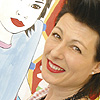  MariaManuela’s
pictures define the contrasts between the culture of the Far East and
the western world’s pop-culture at the same time as they bring
the two forms together. MariaManuela’s
pictures define the contrasts between the culture of the Far East and
the western world’s pop-culture at the same time as they bring
the two forms together.
 MariaManuela
Vintilescu was born in Stockholm in 1959. During her childhood she learns
to appreciate the short haiku poems that her father, Jan Vintilescu,
rendered into Swedish. She also discovers the closed world of Japanese
woodcuts in a book given to her by her mother’s aunt. After graduating
from the Ecole Française in Stockholm, MariaManuela took courses
in painting, drawing and advertising. After ten years as a scene painter
in the theatre, she turned to her own art. Her Pop Icons appeared for
the first time in 1998. Two years later her Flower Year suite was exhibited
in the Stockholm Spring Show at Liljevalch’s Gallery. Since then
her Pop Icons have been showed in several art galleries and Art Centers
in Europe and Japan. MariaManuela
Vintilescu was born in Stockholm in 1959. During her childhood she learns
to appreciate the short haiku poems that her father, Jan Vintilescu,
rendered into Swedish. She also discovers the closed world of Japanese
woodcuts in a book given to her by her mother’s aunt. After graduating
from the Ecole Française in Stockholm, MariaManuela took courses
in painting, drawing and advertising. After ten years as a scene painter
in the theatre, she turned to her own art. Her Pop Icons appeared for
the first time in 1998. Two years later her Flower Year suite was exhibited
in the Stockholm Spring Show at Liljevalch’s Gallery. Since then
her Pop Icons have been showed in several art galleries and Art Centers
in Europe and Japan.
 Frequently
preparing her motifs by first sketching them in pastels or wax crayons,
MariaManuela strives to achieve efficiency in her artistic expression.
Transferring her attention to the prepared linen canvas, her sure hand
liberates the line within the space of a single breath. This dialogue
with the emptiness of the canvas sets in motion a process of cross fertilisation
between the idiom of her materials and the language of aesthetics. The
layers of vinyl are laid on with the utmost care, one on top of the
other, until a surface of perfect smoothness is achieved, producing
a combination of colours that are lustrous and rich in contrast at the
same time as they co-exist in perfect harmony. Frequently
preparing her motifs by first sketching them in pastels or wax crayons,
MariaManuela strives to achieve efficiency in her artistic expression.
Transferring her attention to the prepared linen canvas, her sure hand
liberates the line within the space of a single breath. This dialogue
with the emptiness of the canvas sets in motion a process of cross fertilisation
between the idiom of her materials and the language of aesthetics. The
layers of vinyl are laid on with the utmost care, one on top of the
other, until a surface of perfect smoothness is achieved, producing
a combination of colours that are lustrous and rich in contrast at the
same time as they co-exist in perfect harmony.
 MariaManuela
tells a story that expresses a femininity in which ancient culture is
turned on its head by western modernity. She creates a dialogue between
woodcuts and today’s manga comic strip techniques, between kimono
and mini-skirt. The complexity of this polarisation produces a feministic
mix that she finds appealing and highly appropriate for her cause. MariaManuela
tells a story that expresses a femininity in which ancient culture is
turned on its head by western modernity. She creates a dialogue between
woodcuts and today’s manga comic strip techniques, between kimono
and mini-skirt. The complexity of this polarisation produces a feministic
mix that she finds appealing and highly appropriate for her cause.
William Sweetlove
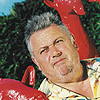  William
Sweetlove, born in Ostende in Belgium in 1949 is a post modern artist
questioning actual ideas about art and culture. William
Sweetlove, born in Ostende in Belgium in 1949 is a post modern artist
questioning actual ideas about art and culture.
 Since 2002 he
is a member of the art collective The Cracking Art Group who believes
in the social impact of art. In their manifesto they plead for a new
vision of the world, for a greater ecological conscience and for the
creation of a new zest, as an antidote for a society of overproduction
and overconsumption. The base material of their art works is a sort
of plastic, produced via a thermo chemical reaction (cracking) in a
natural crude oil. Since 2002 he
is a member of the art collective The Cracking Art Group who believes
in the social impact of art. In their manifesto they plead for a new
vision of the world, for a greater ecological conscience and for the
creation of a new zest, as an antidote for a society of overproduction
and overconsumption. The base material of their art works is a sort
of plastic, produced via a thermo chemical reaction (cracking) in a
natural crude oil.
 The works of
William Sweetlove prove a unique sense of imagination and reflect
a humoristic reaction against the omnipresent petty bourgeoisie. His
paintings, sculptures and assemblages are his impressions of existence
reproduced in materials such as polyester, animal hides and textiles. The works of
William Sweetlove prove a unique sense of imagination and reflect
a humoristic reaction against the omnipresent petty bourgeoisie. His
paintings, sculptures and assemblages are his impressions of existence
reproduced in materials such as polyester, animal hides and textiles.
 William Sweetlove
shapes his own world. The paradox, irony and the duality between natural/artificial
play an important role in his creation process. Sweetlove thrives on
the superficial, placing it in razor-sharp contrast to the sententious.
Through a number of variations on the same theme he creates friction
between the artificial and the substantial. In his world poodles, giraffes
and penguins are rendered into artefacts which unite dadaism, surrealism
and pop art in a common post-modernistic synthesis. William Sweetlove
shapes his own world. The paradox, irony and the duality between natural/artificial
play an important role in his creation process. Sweetlove thrives on
the superficial, placing it in razor-sharp contrast to the sententious.
Through a number of variations on the same theme he creates friction
between the artificial and the substantial. In his world poodles, giraffes
and penguins are rendered into artefacts which unite dadaism, surrealism
and pop art in a common post-modernistic synthesis.
 The works by
William Sweetlove have been showed in art fairs, galleries and museums
all over the world. The works by
William Sweetlove have been showed in art fairs, galleries and museums
all over the world.
|

